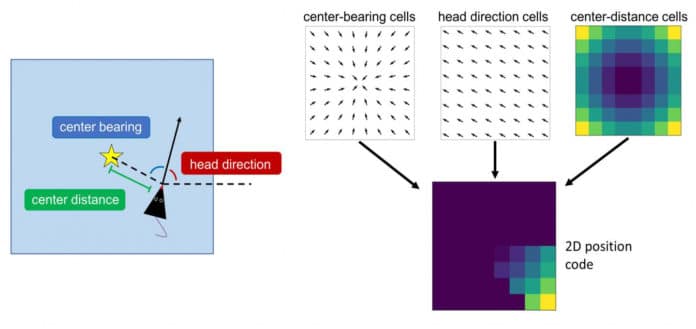Whenever we enter in a new atmosphere, our brain try to perceive information about surrounding to help inform where you are and what direction you are facing. For example, visiting a classroom for the first time and knowing its center to calculate processing space.
A new study by Dartmouth scientists sheds light on how rat brain processes spatial information from the outside world in an egocentric framework and converts it to report to the animal’s spatial position in an allocentric framework.
As the investigation clarifies, the postrhinal cortex of the rat brain is considered “the rat homolog of the human parahippocampal cortex,” which is believed to be in charge of spatial navigation. The investigation inspected how the rat brain processes incoming sensory information to illuminate where it is.
For every trial, the rat was put in an open box (“room”) and trained to forage for sugar pellets that fell from overhead. The rat was filmed, and its brain activity was recorded utilizing electrodes.
Following the preliminaries, the scientists analyzed what the spatial cells were doing to where the rat was in the environment. The outcomes showed that the postrhinal cortex contains three sorts of spatial cells, which act together to give a sense of where the rat is found and its directional orientation inside the local environment.
Lead author Patrick A. LaChance, a graduate student in the department of psychological and brain sciences at Dartmouth said, “Our results demonstrate that it appears that the rat uses the center of the environment to ground where its located, providing new insight into how these animals locate and orient themselves in an area that has boundaries.”
Co-author Jeffrey S. Taube, a professor of psychological and brain sciences at Dartmouth said, “In the area of spatial learning, the study’s findings are exciting, as they illustrate how the postrhinal cortex could provide a template for how humans convert egocentric information (the reference frame in which all information enters the brain) into allocentric information (the reference frame relative to the external world) in the parahippocampal cortex.”
- Some neurons are “center-bearing” cells, which are egocentric, and identify where the geometric center of the space is located to the animal. The center-bearing cells inform the animal of its directional orientation relative to where the center of the room is, such as whether the room center is in front of or behind the animal.
- Other neurons are “center-distance” cells, whose firing rates encode the distance the rat is from the center of the environment. Some center-distance cells may fire more rapidly in the center while others may fire more slowly there, but both types of these cells are encoding the same kind of information.
- Finally, other neurons are “head-direction” cells, which respond to and are specific to a cardinal direction. Regardless of where the animal is located in the room, the cell will fire whenever the animal is looking in a specific direction. Different head direction cells encode different directions, and the population of this cell type appears to encode all 360 degrees.
Other studies have shown that when humans experience brain damage to the parahippocampal cortex region, they may have topographical disorientation and may not be able to form new spatial representations and often are disoriented and get lost. In sum, the study sheds light on how and wherein the brain spatial information gets processed to enable us to do things such as find our car in the parking lot at the end of the day and direct our route home.
The study is published in the journal Science.
